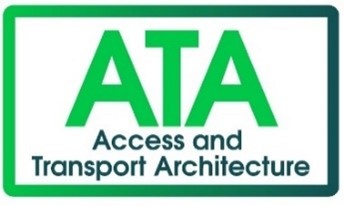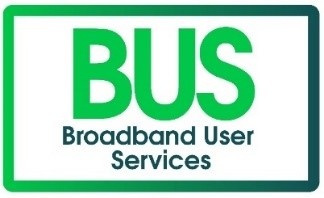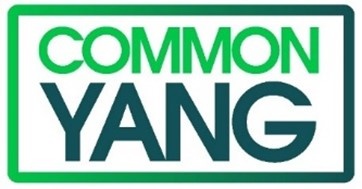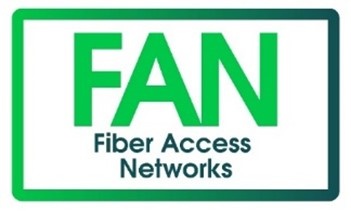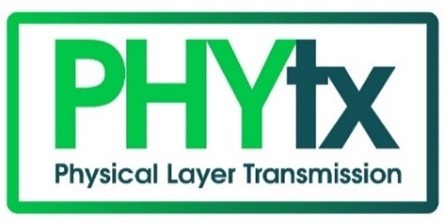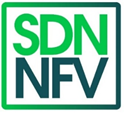Supercharging the drive to services-led broadband
The newly created Marketing Committee Chair role will help drive the Broadband Forum’s transition from connectivity driven to services-led broadband and the importance of educating the industry on how our standards will play a pivotal role.
Bernd Hesse, Board Member and BASe Chair at Broadband Forum, has been elected to the Marketing Committee Chair position and is helping build and establish wider recognition of the Broadband Forum’s strategy, mission, and standards with the industry. This involves driving the participation of fellow marketing experts in this space and ensuring coherent direction in the recognition of the Forum’s new standards.
Congratulations to Lincoln Lavoie who has been re-elected to the Technical Committee Chair position and Martin Casey, Calix; Bernd Hesse, DZS; Chen Li, AT&T; Frank Van der Putten, Nokia; Evan Sun, Huawei Technologies; and Mauro
TilocaTilocca, TIM, who have all been elected to the Board of Directors.
____________________________________
Work Area Updates
For a full list of all Technical Reports published by Broadband Forum, click here. Please feel free to share this information with your colleagues, so they are engaged and aware of the developments of this work.
For additional insight and to get involved, sign up for access to Broadband Forum tools and access your account using your company email address.
ATA publishes TR-497 and launches new L4S project to enhance broadband services with low latency
Target:
The Access & Transport Architecture (ATA) Work Area
maintains primary architectural work of the Broadband Forum. The groupdelivers scalable, dynamic, and flexible architectures to support highly resilient connectivity for the next-generation of responsive services and applications. ATA’s focus includes specifying frameworks and real-time tools to deliver predictive connectivity and service performance.
Progress: TheATA
Work Areapublished the ‘Public Wi-Fi User Authentication and Data Local Forwarding Technical Requirements’ TR-497
which will enable Wi-Fi devices developed by device manufacturers to be uniformly authenticated by an Access Controller, but with data being forwarded locally.A, gained approval on a new project on ‘Application of L4S to Broadband Networks’
has been approved, to define how to implement L4S capability into a broadband network. This will allow service providers to offer services that can support the requirements of latency sensitive applications at the same time as the throughput sensitive applications.Work has begun on ‘Security Considerations for IPv6 Broadband Networks’ WT-515, which aims to provide development considerations and enhance IPv6 security measures for the communication of multiple devices over a network.
Progress was made on a number of projects, with ‘IP Capacity Metrics and Measurement’ WT-471 Issue 4 entering Final Ballot and ‘Control and User Plane Separation for a disaggregated BNG’ WT-459 Issue 3 expected to complete Straw Ballot imminently.
The work area has also continued to make progress on the architecture of ‘Subscriber Session Steering’ WT-474. Joint sessions were held with the SDN/NFV Work Area to review WT-474 and WT-459 in the context of the CloudCO architecture.
The Performance, Experience, and Application Testing (PEAT) Project Stream worked on In-Situ OAM in the QED framework (WT-452), which will enable greater insights of the latency at intermediate points of the network.
For more information on ATA Work Area’s ongoing work, visit: https://wiki.broadband-forum.org/display/BBF/Access+and+Transport+Architecture.
BUS advances USP and enhances Wi-Fi management
Target: Explore the necessary work for delivering an operator-grade smart home and improving the subscriber experience.
Outcome: The Broadband User Services (BUS) Work Area has made significant progress in various key projects including USP 1.4, TR-181 Device:2.18 and the USP Agent Test Plan during its Summer 2024 Member Meeting.
The final review of issues for the User Services Platform (USP) version 1.4, known as TR-369, has been completed. This updated protocol will be published in July 2024. The new version enhances the protocol, allowing more advanced applications to be added to USP-enabled devices on a standard, interoperable platform.
The next version of the USP Agent Test Plan will be released ahead of a plugfest event that will be held at the UNH-IOL facility in Durham, New Hampshire, from September 16-20, 2024, to facilitate interoperability testing. More details can be found here.
The work area completed the final review of the Device:2.18 (TR-181) data model for USP, introducing numerous advanced features and interfaces, enhancing the capability for building connected devices.
Smart home initiatives within the BUS Work Area continue to expand, particularly with discussions on supporting the Matter protocol within the TR-181 data models. USP is being considered as a cloud support mechanism for Matter, and efforts are being made to bridge various IoT protocols and architectures.
The group is also collaborating with joint members of the Connected Standards Alliance and the Wireless Broadband Association to drive these initiatives forward.
The BUS Work Area is actively progressing with the fourth issue of the TR-398 Wi-Fi performance Test Plan, which includes testing for newer Wi-Fi technologies and features. This initiative aims to enhance Wi-Fi management and performance, aligning with the modern needs of operators and deployment scenarios.
Additionally, the work area is contributing to the ITU-T joint Fiber-to-the-Room (FTTR) session by providing input specifically focused on managed Wi-Fi in FTTR deployments. This collaboration aims to ensure robust and efficient Wi-Fi management in these advanced deployment scenarios.
Take a look at the BUS Work Area’s latest work: https://wiki.broadband-forum.org/display/BBF/Broadband+User+Services.
Common YANG on track for TR-383 Amendment 8 publication later this year
Target: Specify YANG modules that are applicable to multiple work areas, provide support to those same work areas for their specific YANG projects, and maintain YANG Best Current Practices, processes, procedures, and tools.
Progress: The Common YANG Work Area is playing a supporting role for the SDN/NFV and FAN Work Areas, with a view that YANG models will be incubated in a series of ongoing projects. The work area continues to review new functionalities targeting future amendments of TR-383.
Outcomes: Progressed Straw Ballot comment resolution on Amendment 8 of TR-383; agreed on the overall structure and functions of the YANG model for Multimedia over Coax Alliance (MoCA) Access Nodes; agreed on the first YANG model for WT-513 addressing the scale of managing large access network elements.
Comment resolution of Amendment 8 of the group’s flagship project, TR-383 ‘Common YANG Modules for Access Networks’ is ongoing. This publication sits at the heart of Common YANG’s output and allows copper- and fiber-based access nodes to be managed through NETCONF/YANG.
The new amendment includes support for ITU-T Ethernet OAM, IP hosts, Subscriber identification and Internet Protocol Flow Information Export (IPFIX). The target is to publish Amendment 8 by the Fall Member Meeting in November 2024.
The group also received feedback from vendors and operators identifying gaps in the work area’s current TR-383 models relative to real world applications.
The first YANG model inputs have been agreed upon for WT-513 ‘Access Node Management at Scale’. This project addresses the use of templates with the objective to improve the overall scalability of the YANG models.
For the long-term maintenance of YANG models, several new guidelines have been approved for inclusion in OD-360 ‘BBF YANG Best Current Practices’. These Best Practices are being used in automated tooling to improve quality and harmonize the YANG modules published by the Broadband Forum.
The group agreed on the overall structure and functions of the YANG model for the Multimedia over Coax Alliance (MoCA) Access based architecture, as part of WT-496 ‘YANG Modules for MoCA Access 2.5 Interface’. The first draft of the YANG models is expected imminently. This model extends BBF YANG management support to nodes offering triple play services over existing coax cables within people’s homes.
The work area has played a key supportive role for other work areas aiming to develop and publish YANG models. To that end, sessions were held with the SDN/NFV and FAN Work Areas, reviewing items of common interest.
The YANG model for VoIP will further progress after the Summer Member Meeting through interim calls. This model extends BBF YANG management support to nodes offering traditional POTS voice services over a packet-based network. The goal is to publish the first version by mid-2025.
For an overview of the Common YANG Work Area’s current activities, please visit: https://wiki.broadband-forum.org/display/BBF/Common+YANG+Work+Area.
FAN plans future PON Interoperability Plugfests
Target: The Fiber Access Networks (FAN) Work Area specifies and maintains PON architecture and nodal requirements, PON abstraction and mobile backhaul requirements. It is also responsible for PON test suites related to PON conformance and interoperability, and compliance test plans related to XGS-PON, NG-PON2, 25GS, 50G-PON, and Physical Medium Dependent (PMD)/Transmission Convergence (TC) Layer. Lastly, it is responsible for PON YANG data model specifications.
In Progress:
Work continued on PON testing with DTP-247 Issue 4 Corrigendum 1 ONU Conformance Test Plan’ and DTP-255 Issue 2 ‘OLT-ONU Interoperability Test Plan’ which are being prepared for Final Ballot.
The FAN Work Area has started reviewing energy saving contributions for the proposed project on Energy Power Saving Requirements, Test Plan, and Data Model. It was agreed that further collaboration is needed in this area to provide the requirements that can be used. Future contributions are encouraged.
FAN has started to discuss PON Interoperability Plugfests for 2024 and 2025, with four test sites identified and currently being discussed. You can view the ongoing discussions and decisions here.
For more on the FAN Work Area’s ongoing work, please see: https://wiki.broadband-forum.org/display/BBF/2024+Summer+Meeting+-+Fiber+Access+Networks+Meeting+Minutes
PHYtx Work Area continues efforts with the third issue of TR-301 and the MoCA AccessTM Performance Test Plan
Target: To enable multi-vendor interoperability in deployments for both access and in-premises networks.
Progress: The work area continued its work with TR-301 Issue 3: ‘Architecture and Requirements for Fiber to the Distribution Point’ with architecture and requirements for coaxial based technology and P2MP scenarios. A corrigendum on TR-285 Issue 2 was prepared for technical review and a third amendment to TR-301 Issue 2 is ready for Final Ballot.
The PHYtx Work Area continued the development of WT-500 ‘MoCA Access Performance Test Plan’ and aims to progress to Straw Ballot by the 2025 Spring Member Meeting. MoCA Access is one of the technologies that can be used for Fiber To The distribution point (FTTdp) deployments as described in TR-419i2.
Amendment 3 to TR-301i2 - which is adding bulk data collection using IPFIX - has completed Straw Ballot. The Final Ballot approval is set for this summer.
A corrigendum to TR-285i2 was prepared, which clarifies the coaxial cable model that is used for calculating the coaxial cable attenuation. This update supports the ongoing work on WT-500 which refers to this model. The work area aims for Straw Ballot and Final Ballot approval in the summer.
For further insight into the current work of the Physical Layer Transmission Work Area, visit: https://wiki.broadband-forum.org/display/BBF/Physical+Layer+Transmission.
SDN/NFV publishes FANS document; makes significant progress to further AIM and disaggregation specifications
Target: The SDN/NFV Work Area focuses on the introduction of Software Defined Networking (SDN) and Network Functions Virtualization (NFV) in conjunction with general purpose hardware to create the basis for cloud-based, edge, and access networks. Building on this framework, the Work Area addresses migration and coexistence of physical and virtual elements, into the broadband network, define interfaces, test cases, use cases and scenarios, reference implementations, and automation.
Progress: The main focus is CloudCO interfaces, disaggregated OLT, and Automated Intelligence Management (AIM) and Data Collection.
Outcomes: TR-386 Issue 2 ‘Fixed Access Network Sharing’ was published. Work was also completed on WT-403 Amendment 1 ‘PON Abstraction Interface for Time-Critical Applications’ by creating the data model and adding a new Annex A, and on WT-451a1 by revising Annex A, with both documents entering Straw Ballot.
A further revision was approved to restructure Chapter 5 of WT-384 Issue 2 ‘Cloud Central Office Reference Architectural Framework’ to improve the sections related to device disaggregation.
New call flows related to MPLS-LDP and BGP were approved to improve WT-477 “Cloud CO Enhancement - Access Node Functional Disaggregation”.
The Tiger Team on CloudCO interfaces (WT-411i2/WT-454i2) continues its activities on topology and network resource management for inventory by preparing a first draft of the WT-454i2 baseline text. Comments were received from Orange and TIM regarding the device hardware model for better deployability, which will be discussed further by the Tiger Team.
On the Artificial Intelligence and automation fronts, functional requirements were discussed for WT-508 ‘Broadband Network Data Collection’ (BNDC) and security aspects were analyzed for WT-436i2 ‘AIM Framework and Architecture.’
A new project on “Intent-based interface between Orchestrator and SDN Management and Control (Occo-Nf-sdn)” has been approved, with the first phase of the project to define the use cases for the intent-based interface.
More information about the SDN/NFV Work Area can be found at: https://wiki.broadband-forum.org/display/BBF/SDN+and+NFV.
WWC continues its work on Phase 18.1, IMS for 5G-RG, and launches a Service Provider Survey on Multi-tenant FWA
Target: Deliver more value with deployment options for integrated, wireline, and mobile operators and suppliers. Optimization of the Total Cost of Ownership by consolidating network, common control plane, and streamlined backend by a comprehensive, well-specified, deployed Wireless-Wireline-Convergence architecture and functions to deliver broadband services with the 5G Core.
Progress: Broadband Forum has made the convergence of broadband access with the 5G core a reality, is enriching the industry with value-added features of the 5G system, and continues its productive cooperation with 3GPP. The WWC Work Area continues to progress work in three active Project Streams: 5G, Multi-tenant FWA, and IMS for 5G-RG.
Outcomes: New set of capabilities and enhancements, subsuming more of the capabilities of the 5G system, with specifications and marketing documents in progress. Ongoing work in the WWC Work Area focuses on bringing more value to 5G for wireline and provide operators with increased flexibility, revenue potential, and deployment options. The goal is to increase the service capabilities of the network to allow operators to fully leverage convergence while at the same time giving them more paths to transition to a single core network.
The work area continues to incorporate capabilities from the 5G Toolkit into specifications to realize a variety of use cases. These range across a broad spectrum and include topics such as hybrid access, enhanced work from home, and convergence of voice with the mobile system. This work will allow operators to provide a uniform experience to their customers irrespective of the access or appliance they are using, supported by a common and streamlined back office and control plane.
Expanding the deployment options for WWC, the Phase 18.1 work (in conjunction with 3GPP Release 18) addresses reliability of AGF CUPS, hybrid access, network data analytics, and support for devices behind a 5G-RG. The work area continues work on key documents, WT-456 Issue 3 (AGF Functional Requirements), WT-470 Issue 3 (5G Wireless Wireline Convergence Architecture) and WT-458 Issue 2 (CUPS for 5G Wireless Wireline Convergence).
Continuing collaboration with fellow Broadband Fourm work areas, a joint project between WWC and ATA on ‘Application of L4S to Broadband Networks’ was initiated.
The IMS for 5G-RG Project Stream continues its work on 5G-RG IMS-based voice support, defining related CPE device management requirements to be specified in TR-124 and the data model extensions for TR-181. This is based on TR-493 (IMS for 5G-RG Architecture) and TR-494 (IMS for 5G-RG Residential Voice Requirements), enabling to converge legacy voice services onto the 5G system, and complements the WWC Phase 16.3. The WWC Work Area continues to work with the BUS Work Area on 5G-RG management, including the cellular interface data model to support 5G Fixed-Wireless gateways. WWC brings the requirements related to functions and capabilities that are required to be supported by 5G-RG and deliver IMS-based voice services.
The work on extending Fixed Wireless Access to serve Multi-Tenant Units (MTUs) with Gigabit connectivity has been structured into two phases, following discussions about tunneling approaches (PDU session type IP or Ethernet) to be pursued. The work area encourages service providers members to use the Survey, which has now been launched following the meeting, to help assess and prioritize use cases, deployment scenarios and requirements.
The work area has also progressed accompanying work on marketing and education, including three marketing documents currently under development. While MD-470 (Value of WWC) is nearing completion and is now being prepared for Straw Ballot readiness, the work on MD-506 (5G Hybrid Access) is still in an early stage. A new marketing document MD-516 addressing the benefits of Multi-Tenant Fixed Wireless Access has been initiated. Discussions are progressing on WWC use cases for this year’s Broadband Forum Innovation Demos at Network X (October 8-11) with engaged participants to join with their 5G Core Network, AGF, and 5G-RG components. While resources about Multi-tenant FWA and WWC Phase 18.1 were recently released, the ongoing marketing work continuously offers great opportunities for BBF members to engage.
For more on the WWC Work Area, please see: https://wiki.broadband-forum.org/display/BBF/Wireless-Wireline+Convergence.and began work on Security Considerations for IPv6 Broadband Networks’ WT-515. Read the full Summer Meeting 2024 update here: https://www.broadband-forum.org/ata-publishes-tr-497-and-launches-new-l4s-project-to-enhance-broadband-services-with-low-latency
BUS advances USP and enhances Wi-Fi management
The Broadband User Services (BUS) Work Area aims to explore the necessary work for delivering an operator-grade smart home and improving the subscriber experience.
BUS Work Area has made significant progress in various key projects including USP 1.4, TR-181 Device:2.18 and the USP Agent Test Plan during the meeting. Read the full Summer Meeting 2024 update here: https://www.broadband-forum.org/bus-advances-usp-and-enhances-wi-fi-management
Common YANG on track for TR-383 Amendment 8 publication later this year
The work area targets to specify YANG modules that are applicable to multiple work areas, provide support to those same work areas for their specific YANG projects, and maintain YANG Best Current Practices, processes, procedures, and tools.
The work area progressed Straw Ballot comment resolution on Amendment 8 of TR-383; agreed on the overall structure and functions of the YANG model for Multimedia over Coax Alliance (MoCA) Access Nodes; agreed on the first YANG model for WT-513 addressing the scale of managing large access network elements. Read the full Summer Meeting 2024 update here: https://www.broadband-forum.org/common-yang-on-track-for-tr-383-amendment-8-publication-later-this-year
FAN plans future PON Interoperability Plugfests
The Fiber Access Networks (FAN) Work Area specifies and maintains PON architecture and nodal requirements, PON abstraction and mobile backhaul requirements. It is also responsible for PON test suites related to PON conformance and interoperability, and compliance test plans related to XGS-PON, NG-PON2, 25GS, 50G-PON, and Physical Medium Dependent (PMD)/Transmission Convergence (TC) Layer. Lastly, it is responsible for PON YANG data model specifications.
FAN prepared PON testing with DTP-247 Issue 4 Corrigendum 1 ONU Conformance Test Plan’ and DTP-255 Issue 2 ‘OLT-ONU Interoperability Test Plan’ for Final Ballot. The work area started reviewing energy saving contributions for the proposed project on Energy Power Saving Requirements, Test Plan, and Data Model, concluding that further collaboration was required. PON Interoperability Plugfests for 2024 and 2025 were also discussed. Read the full Summer Meeting 2024 update here: https://www.broadband-forum.org/fan-plans-future-pon-interoperability-plugfests
PHYtx Work Area continues efforts with the third issue of TR-301 and the MoCA AccessTM Performance Test Plan
The Physical Layer Transmission Work Area aims to enable multi-vendor interoperability in deployments for both access and in-premises networks.
The work area continued its work with TR-301 Issue 3: “Architecture and Requirements for Fiber to the Distribution Point” with architecture and requirements for coaxial based technology and P2MP scenarios. A corrigendum on TR-285 Issue 2 was prepared for technical review and a third amendment to TR-301 Issue 2 is ready for Final Ballot. Read the full Summer Meeting 2024 update here: https://www.broadband-forum.org/phytx-work-area-continues-efforts-with-the-third-issue-of-tr-301-and-the-moca-accesstm-performance-test-plan
SDN/NFV publishes FANS document; makes significant progress to further AIM and disaggregation specifications
The SDN/NFV Work Area focuses on the introduction of Software Defined Networking (SDN) and Network Functions Virtualization (NFV) in conjunction with general purpose hardware to create the basis for cloud-based, edge, and access networks.
SDN/NFV published TR-386 Issue 2 ‘Fixed Access Network Sharing’ and completed work on WT-403 Amendment 1 ‘PON Abstraction Interface for Time-Critical Applications’ and WT-451a1, with both documents entering Straw Ballot. Read the full Summer Meeting 2024 update here: https://www.broadband-forum.org/sdn-nfv-publishes-fans-document-makes-significant-progress-to-further-aim-and-disaggregation-specifications
WWC continues its work on Phase 18.1, IMS for 5G-RG, and launches a Service Provider Survey on Multi-tenant FWA
The work area aims to deliver more value with deployment options for integrated, wireline, and mobile operators and suppliers. It focuses on optimizing the Total Cost of Ownership by consolidating network, common control plane, and streamlined backend by a comprehensive, well-specified, deployed Wireless-Wireline-Convergence architecture and functions to deliver broadband services with the 5G Core.
The work area continues to progress in three active Project Streams: 5G, Multi-tenant FWA, and IMS for 5G-RG. The work area encourages service providers members to use the Operator Survey, which will be launched after the meeting, to help assess and prioritize use cases, deployment scenarios and requirements for extending 5G FWA to serve multi-tenant units. Read the full Summer Meeting 2024 update here: https://www.broadband-forum.org/wwc-continues-its-work-on-phase-18-1-ims-for-5g-rg-and-launches-a-service-provider-survey-on-multi-tenant-fwa
OB-CAS project officially launches and develops alarm correlation as first sample application
The Open Broadband-CloudCO Application Software Development Kit (OB-CAS) project recently launched at the end of March 2024. The project will create a reference network management application ecosystem for the broadband industry. The project will develop an open platform software application environment to foster open innovation, leveraging existing standardized or open-source APIs. Access to a broader pool of expertise enables ISPs to select fit-for-purpose applications from a community of independent software vendors. This allows ideas to be developed faster and ensures faster time-to-market of new products or services. Software application providers will be able to integrate their cloud application running in a CloudCO environment more easily.
The OB-CAS team has agreed to develop the first Software Development Kit (SDK) deliverable and an associated sandbox to test applications. This includes an initial selection of APIs that enable an application to interface with an access domain controller, the usage of the OB-BAA core microservices, a PON network simulation for testing purposes, and the development of a sample application that can run in this sandbox environment, leveraging the APIs mentioned above.
The OB-CAS work group has agreed on an alarm correction application as the first sample application, which represents an important building block for root cause analysis automation. This application will detect if there is a common root cause when multiple alarms or event notifications are received by the network, with the logging of this information in an OpenSearch database.
The work group is aiming to demonstrate the alarm correlation application running in the OB-CAS sandbox environment at the Broadband Forum Innovation Demonstration at Network X in October 2024.
Management and data analysis software application providers are invited to join the project to help shape the API requirements and test and grow the SDK to see how their applications can operate in a CloudCO environment.
To learn more about the OB-CAS project’s ongoing work, please see: https://wiki.broadband-forum.org/display/OBCAS/OB-CAS+Home
OB-MAP continues collaboration with BUS and prpl to advance Wi-Fi data modeling
The Open Broadband – Multi Access Point (OB-MAP) project and the prpl Foundation’s prplMesh project are establishing a baseline vision of how data and control commands will be represented in TR-181. This will influence the design of the APIs presented by prplMesh.
The data model and prplMesh APIs are meeting the diagnostics and management needs of service providers that use multiple physical layer networking technologies to deliver ever-increasing broadband bandwidth and innovative services through complex home networks to end-user devices. This has impacted progress on prplMesh’s Northbound API (NAPI).
The OB-MAP project team continues its work on developing a high-level data model for network operators that would ease the ability to configure Wi-Fi across the home. Importantly, the data model enables configuration of different types of services, for example, public or private Wi-Fi. All devices traversing the home Wi-Fi network can be easily configured, allowing for different or identical configurations, for different frequency bands. The project team is also working on topology, to allow a full view of a Wi-Fi mesh network including wireless and wired links.
The OB-MAP project team will continue to collaborate with the BUS Work Area and the prpl Foundation on requirements and feature prioritization, and data modelling of multiple devices and services in a mesh network.
To learn more about the OB-MAP project’s ongoing work, please see: https://wiki.broadband-forum.org/display/OBMAP/OBMAP+Home.
OB-USP-Agent version 8 has been released; progressing with integrations into prplOS and RDK-B
The OB-USP-Agent (OBUSPA) team has released version 8 (Heron Release), which is focused on implementing the USP Services Architecture functionality introduced in the USP version 1.3 and TR-181 Device: 2.16 specifications. Discussions on the scope of the next release, version 9 (Ibis Release) are underway.
The Heron release helps ISPs offer differentiated value-added services at a faster pace, allowing individual components of the network to be upgraded without the need to upgrade the whole firmware. These new features within the Heron release will ensure OBUSPA is a key component in open-source middleware solutions (e.g., prplOS and RDK-B) as it enables the decentralization of a device's data model into USP-enabled containerized applications.
Integration of the Heron release was completed as part of the prplOS 3.0.3 release, enabling multiple demos during the prpl Summit in May 2024. The Heron Release became the first release to be integrated directly into prplOS. This includes integration into the CI/CD pipeline where the software undergoes both compliance and data model testing. These implementation and integration experiences provided the USP Project Stream with proposed enhancements to the USP Services Architecture to consider in the upcoming USP 1.4 release.
OBUSPA team members have submitted a pull request to the RDK community to update the existing integration to the Heron Release. The OBUSPA team is also working alongside the RDK community on further enhancements related to the manner in which OBUSBA is integrated into RDK-B.
The OBUSPA team is continuing to work with QA Cafe to develop and implement a plan for executing USP compliance testing against new major releases of OBUSPA and the best options for making these reports available for downstream consumption.
For more information about the team’s latest work, visit: https://wiki.broadband-forum.org/display/OBUSPA/OB-USP-Agent+Home.
OB-UDPST project team closes in on version 8.2.0 and completes TR-471 Issue 4
Current Progress: Building on the success of the publication of version 8.1.0, the OB-UDPST project team is working with a network operator as they evaluate a large-scale rollout driven by their multi-stream & multi-gigabit testing needs.
The project has almost completed work on version 8.2.0, making minor fixes and enhancements, and delivering multi-key authentication. The addition of multi-key authentication allows each individual server instance to better support a variety of client instances across different service offerings and device types. For large deployments, this capability is expected to significantly improve key management and maintenance.
The OB-UDPST project team has completed work on Issue 4 of TR-471. This includes new multi-flow capabilities in the information model and the addition of new parameters to the TR-181 Data Model to support Issue 4 of TR-471. The project team has agreed to send TR-471 Issue 4 to Final Ballot.
For more information about the OB-UDPST project team’s current progress, please visit: https://wiki.broadband-forum.org/display/OBUDPST/OB+UDP+Speed+Test+Home.
OB-5WWC calls for participation on 5G-RG software architecture to support live demo progress
Open Broadband-5WWC (OB-5WWC) is an open source project focused on bringing the full benefits of the 5G ecosystem to fixed-line services and offering a full end-to-end solution to operators. The aim is to create a reference implementation of the Broadband Forum specified Wireless-Wireline Convergence solution for 5G capable Residential Gateways (5G-RGs), providing shorter time-to-market for products and reduced development times and cycles.
OB-5WWC also seeks to provide a solution stack suitable for integration with OpenWRT/RDK-B frameworks and to provide a reference for testing Access Gateway Function (AGF) and RG test tool development.
Current Progress: Members of the project team have supported mutual members’ activities by improving data models for cellular interface management to establish an RG architecture Technical Report for the BUS Work Area.
The group continues its progress with the architecture, design, and alignment with OpenWRT and RDK-B and gaining clarification of RG deployment scenarios. The team has documented RG deployment, architecture, and modeling aspects.
An RDK-aligned 5G-RG software architecture proposal was submitted in Q4 2023 and is still open for review and comments. The exploration of components and tools to establish the test environment, including for AGF and 5G Core, is in progress. A chipset vendor member has offered to contribute simulation and testing components. The project team continues to welcome and encourage interested parties, including candidates with software development experience, and radio module and mobile experience to participate and review the proposal.
Discussions continue on the Broadband Forum Innovation live demonstrations in 2024, considering key use cases with 5G-RG.
For any interested parties (including non-Broadband Forum members) that wish to be part of the project, please sign the project participation agreement online here.
For more on the OB-5WWC project’s current work, please see: https://wiki.broadband-forum.org/display/OB5WWC/OB-5WWC+Home.
For more on the work of The Broadband Forum’s Work Areas, please visit the wiki here: https://wiki.broadband-forum.org/display/BBF/BBF+Work+in+Progress+-+Projects%2C+Project+Streams%2C+and+Jira+Links
Upcoming BASe events
- BASe at Fiber Connect 2024 – July 29 -30
- Driving Broadband Value-Add Services, Service platforms and Commercial App Provider Relationships vBASe Webinar – September 5
- Sustainability in the Broadband Home and Network vBASe Webinar – September 19
- BASe at SCTE TechExpo24 – September 25
- BASe at Network X – October 8-10
- State of PON vBASe Webinar – October 24
- Fixed Mobile Convergence Opportunities vBASe Webinar – November 7
A limited number of pods remain at the BBF Pavilion at Network X
The Broadband Forum Pavilion will be returning to this year’s Network X on 8th - 10th October in Porte De Versailles, Paris. Only two Broadband Forum Member exclusive pods remain to showcase your innovative products and services, connect with new prospects, and amplify your company's presence in the market.
To reserve a pod, please reach out to the Network X team at marc.wallentin@informa.com or find out more here.
Save the dates! Broadband Forum face-to-face 2024 meetings
Keep up to date on our latest activities and whereabouts!
- Follow us on LinkedIn (@Broadband Forum) and subscribe to us on YouTube (@BroadbandForumVideos) for more BBF content.
Welcome to our new and returning members!
We welcomed a mix of new members and guest companies during the Summer Member Meeting 2024. We had 133 registered attendees, with 15 first-time attendees and 10 guests from nine companies. Our new members included: Anlix, Comcast, Condor Technologies, FreeCast, FiberHome, Lifemote, Made4it, Motive, and prpl Foundation.
Are you interested in becoming the next member of the industry’s leading standards body in defining broadband networks? Broadband Forum membership will not only accelerate your company’s progress but enable you to become a key influencer in developing 5G, the Cloud, the connected home and access networks.
We have a range of membership options for companies of all sizes, from startup companies to large corporations and not-for-profit organizations. Our new regional Operator Membership category has further opened participation; take a look for further details of the access level privileges, benefits and requirements.
To learn more about the benefits of membership, watch the video interview with Rhonda Heier, Director of Membership Development, as Rhonda discusses the value of the Broadband Forum membership here or email rheier@broadband-forum.org for more information.
Contact information
Questions or ideas? Contact the Broadband Forum at +1 510.492.4020 or email info@broadband-forum.org.



